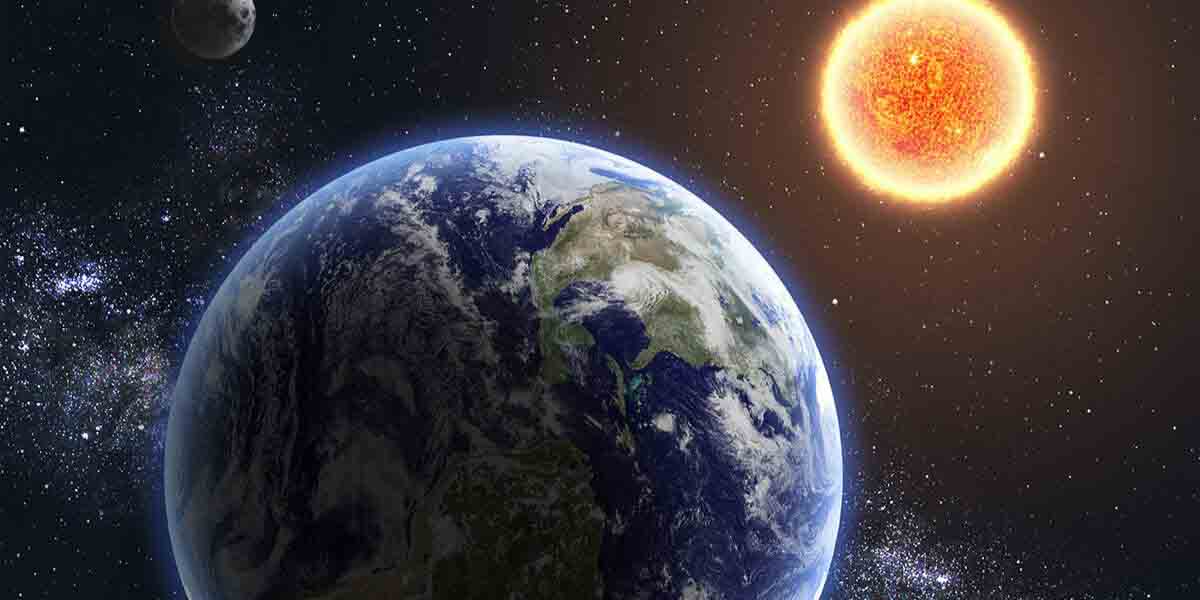Hey there, space enthusiasts! Ever heard of Perihelion Day? If not, buckle up because we’re about to take a thrilling ride around the sun – metaphorically speaking, of course!
Perihelion Day is an interesting astronomical event that marks the day when Earth is at its closest point to the Sun in its elliptical orbit. While it might sound like a significant event affecting our weather, it doesn’t actually lead to noticeable temperature changes!
- Related: International Mind-Body Wellness Day
History of Perihelion Day
Around the fortnight following the December Solstice, we witness the celestial phenomenon known as Perihelion. Although the Northern Hemisphere is enshrouded in the wintry embrace, Earth ventures to a proximity of slightly over 91 million miles from the solar orb on this occasion.
The nuances of Perihelion do not manifest in a perceivable augmentation of terrestrial warmth, nor does it bestow any reprieve from the pervasive frostiness. Nonetheless, its implications weave through the tapestry of seasons, as the planet’s orbital velocity culminates at this juncture.
Remarkably, during Perihelion, the solar disc graces our firmament with its most expansive visage of the annual cycle, subsequently dwindling in apparent magnitude as days unfold.
Historical annals reveal that in the year 1246, Perihelion Day coincided precisely with the December Solstice. Over subsequent cycles spanning 58 years, the temporal alignment of this event has undergone a subtle shift.
This chronological dance of Perihelion Day is orchestrated by the intricate choreography of precession and celestial mechanics encapsulated within the Milankovitch cycles. Additionally, lunar influence introduces a variable temporal offset, potentially oscillating the event’s date by a span of two solar revolutions.
While the Earth-Moon barycenter embarks on a predictable trajectory encircling our radiant star, the planet’s core, situated approximately 2,900 miles distant from this barycenter, retains the capability to deviate in manifold directions, thereby modulating the precise instant of Perihelion.
Analyzing astronomical data, we observe that in the epoch of 2000, the longitudinal alignment of Perihelion approximated 282.895°. A decade hence, by the year 2010, this celestial longitude had undergone a subtle augmentation to approximately 283.067°. Projections set forth by astronomical experts posit a future convergence where Perihelion will harmonize precisely with the March Equinox in the annum 6430.
The Science Behind Perihelion
What is Perihelion?
Perihelion is derived from two Greek words – ‘peri,’ meaning near, and ‘helios,’ meaning sun. It refers to the point in Earth’s orbit where it is closest to our star, the sun.
The Earth’s Orbit Explained
Our planet doesn’t orbit the sun in a perfect circle. Instead, it follows an elliptical path. This means that at certain times, Earth is closer to the sun than at others. Perihelion marks the closest point, while Aphelion, its counterpart, is when Earth is farthest from the sun.
How to Observe Perihelion Day Activities
Stargazing Parties:
Gather your friends and family, set up a telescope, and witness the celestial wonders.
Educational Workshops:
Join local astronomy clubs or institutions hosting workshops about Perihelion and its significance.
Documentary Nights:
Dive deep into space documentaries, exploring Earth’s relationship with the sun.
5 Important Facts About PERIHELION
Varying Distances:
The difference in distance between Perihelion and Aphelion is about 5 million kilometers.
Not Fixed:
The date of Perihelion can vary slightly each year due to gravitational influences from other planets.
Energy Intake:
Despite being closer to the sun during Perihelion, Earth receives about 7% more solar energy than during Aphelion.
Effect on Climate:
Some scientists theorize that Perihelion might influence certain climatic patterns on Earth, although the evidence is still under study.
Observation Difficulty:
Spotting Perihelion’s effects requires precise instruments and calculations, making it a fascinating challenge for astronomers.
Perihelion Day Quotes, Wishes, and Messages
“Embrace the warmth of the sun and the mysteries of the cosmos on this Perihelion Day!”
“As Earth leans closer, may we be reminded of our unique place in the universe.”
“Here’s to the dance between Earth and sun – Happy Perihelion!”
“Let the gravitational pull of the sun inspire you to reach new heights.”
“As we orbit closer, may our hearts be filled with wonder and curiosity.”
“On Perihelion Day, let’s celebrate the wonders of our solar system!”
“The sun shines brighter on Perihelion Day, lighting up our journey.”
“Gather under the celestial canopy, for today, Earth and sun come close.”
“To the wonders above and the mysteries below – Happy Perihelion!”
“May the sun’s embrace on Perihelion Day warm your soul and inspire your spirit.”
Why Perihelion Day is Important
Understanding orbital mechanics:
Observing and calculating Perihelion helps us refine our understanding of Earth’s elliptical orbit and the gravitational forces at play. It’s a tangible example of celestial bodies moving in non-circular paths.
Comparative planetary science:
Studying Perihelion in other planets with more eccentric orbits (like Mars) allows us to understand their climate cycles and potential habitability.
Spark interest in astronomy:
Perihelion Day can be a gateway to ignite curiosity about celestial events and planetary motions, encouraging further exploration of astronomy and science.
Teaching fundamental concepts:
It provides a practical example to explain orbital dynamics, solar system interactions, and the difference between distance and temperature in relation to seasons.
Perihelion Day Dates
| Year | Date | Day |
| 2022 | January 4 | Tuesday |
| 2023 | January 4 | Wednesday |
| 2024 | January 3 | Wednesday |
| 2025 | January 4 | Saturday |
| 2026 | January 3 | Saturday |
FAQs
What is Perihelion Day?
Perihelion Day is the day when Earth is closest to the sun in its orbit.
When is Perihelion Day?
Perihelion Day falls on January 3, 2024.
Conclusion
As we wrap up our journey around Perihelion Day, let’s take a moment to appreciate the wonders of our universe. Whether you’re a seasoned astronomer or someone curious about the cosmos, Perihelion Day serves as a poignant reminder of the marvels that surround us. So, here’s to many more orbits, discoveries, and celebrations under the sun!

